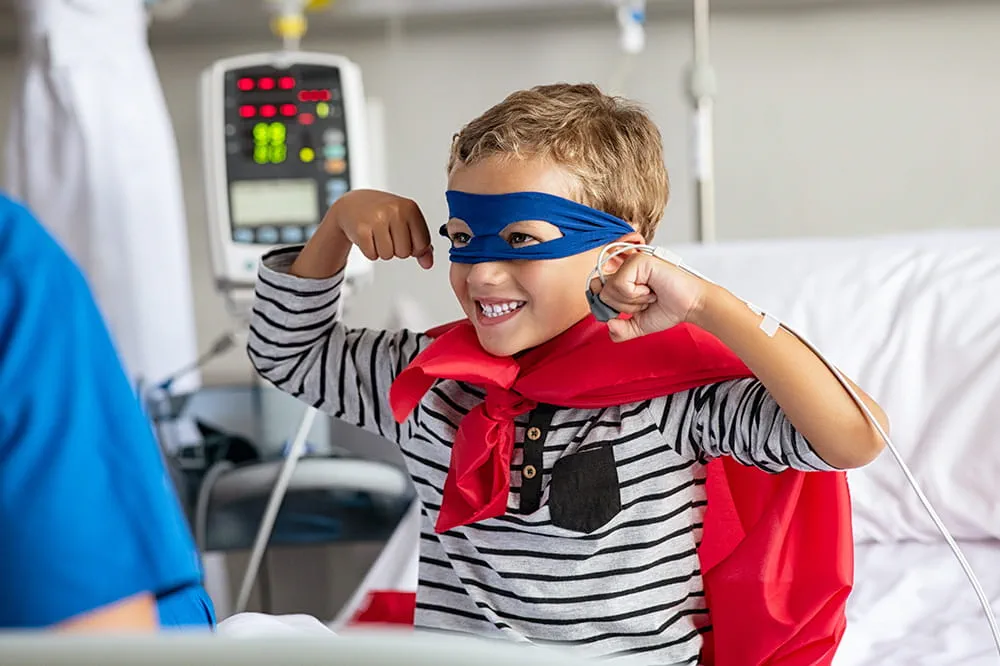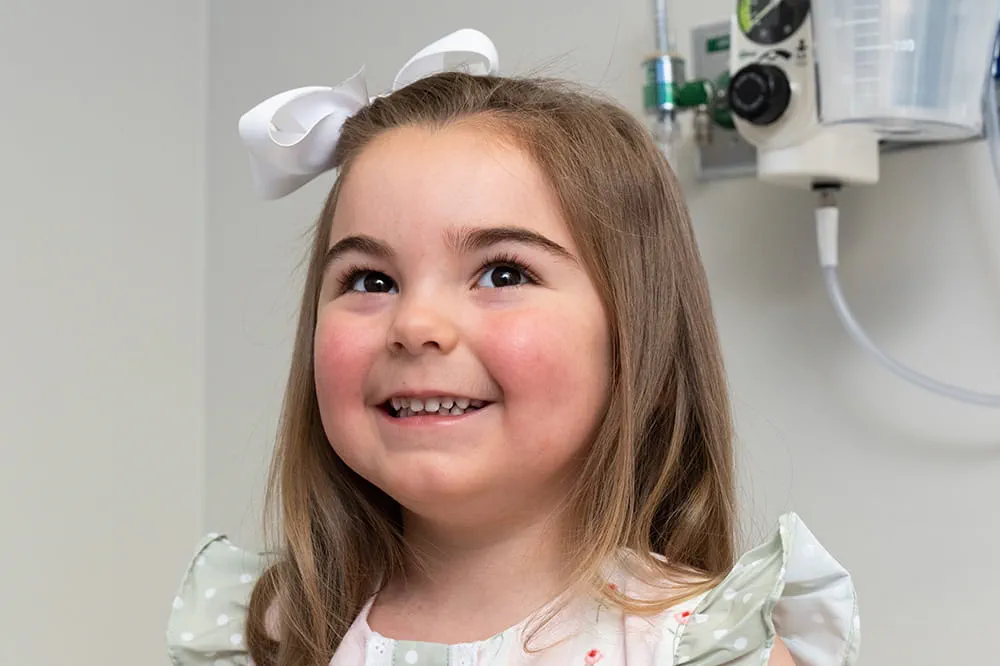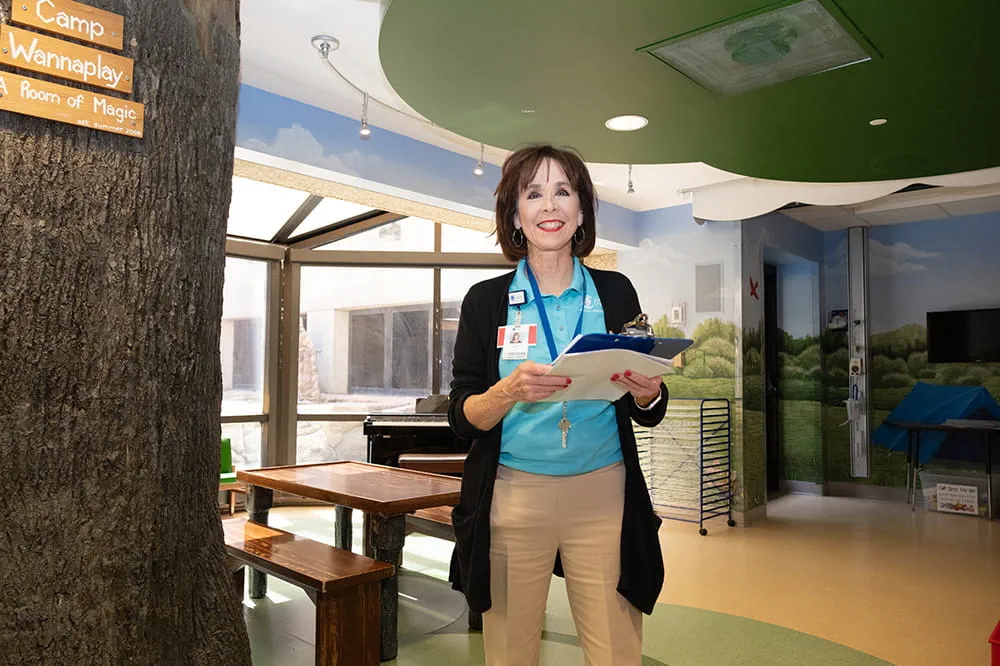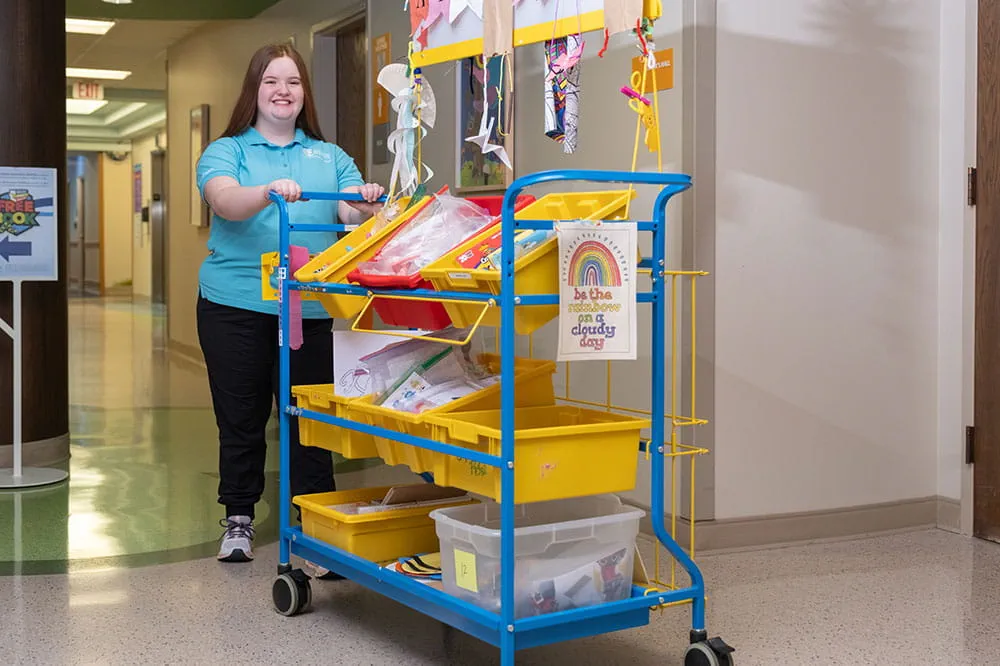GIVE NOW before 2025 ends—your gift will be doubled to help children in need. Click here to 2x your impact!

Ranked nationally in pediatric care.
Arkansas Children's provides right-sized care for your child. U.S. News & World Report has ranked Arkansas Children's in seven specialties for 2025-2026.

It's easier than ever to sign up for MyChart.
Sign up online to quickly and easily manage your child's medical information and connect with us whenever you need.

We're focused on improving child health through exceptional patient care, groundbreaking research, continuing education, and outreach and prevention.

When it comes to your child, every emergency is a big deal.
Our ERs are staffed 24/7 with doctors, nurses and staff who know kids best – all trained to deliver right-sized care for your child in a safe environment.

Arkansas Children's provides right-sized care for your child. U.S. News & World Report has ranked Arkansas Children's in seven specialties for 2025-2026.

Looking for resources for your family?
Find health tips, patient stories, and news you can use to champion children.

Support from the comfort of your home.
Our flu resources and education information help parents and families provide effective care at home.

Children are at the center of everything we do.
We are dedicated to caring for children, allowing us to uniquely shape the landscape of pediatric care in Arkansas.

Transforming discovery to care.
Our researchers are driven by their limitless curiosity to discover new and better ways to make these children better today and healthier tomorrow.

We're focused on improving child health through exceptional patient care, groundbreaking research, continuing education, and outreach and prevention.

Then we're looking for you! Work at a place where you can change lives...including your own.

When you give to Arkansas Children's, you help deliver on our promise of a better today and a healthier tomorrow for the children of Arkansas and beyond

Become a volunteer at Arkansas Children's.
The gift of time is one of the most precious gifts you can give. You can make a difference in the life of a sick child.

Join our Grassroots Organization
Support and participate in this advocacy effort on behalf of Arkansas’ youth and our organization.

Learn How We Transform Discovery to Care
Scientific discoveries lead us to new and better ways to care for children.

Learn How We Transform Discovery to Care
Scientific discoveries lead us to new and better ways to care for children.

Learn How We Transform Discovery to Care
Scientific discoveries lead us to new and better ways to care for children.

Learn How We Transform Discovery to Care
Scientific discoveries lead us to new and better ways to care for children.

Learn How We Transform Discovery to Care
Scientific discoveries lead us to new and better ways to care for children.

Learn How We Transform Discovery to Care
Scientific discoveries lead us to new and better ways to care for children.

When you give to Arkansas Children’s, you help deliver on our promise of a better today and a healthier tomorrow for the children of Arkansas and beyond.

Your volunteer efforts are very important to Arkansas Children's. Consider additional ways to help our patients and families.

Join one of our volunteer groups.
There are many ways to get involved to champion children statewide.

Make a positive impact on children through philanthropy.
The generosity of our supporters allows Arkansas Children's to deliver on our promise of making children better today and a healthier tomorrow.

Read and watch heart-warming, inspirational stories from the patients of Arkansas Children’s.

Hello.

Arkansas Children's Hospital
General Information 501-364-1100
Arkansas Children's Northwest
General Information 479-725-6800


Common GI Symptoms, Rare Condition: AJ’s Journey from Acid Reflux to Achalasia at Arkansas Children’s
Published date: November 06, 2025
Aaron "AJ" Robinson was at his grandmother's, eating pizza, when he felt severe pain in his chest. The antacids prescribed to the 12-year-old for acid reflux didn't ease the pain, prompting a trip to the Arkansas Children's Hospital (ACH) emergency room. Results from an X-ray hinted at a condition rarely seen in children.
In the months leading up to the ER visit, AJ said it felt "like food was getting stuck, like there was pressure." The discomfort led him to eat less. Still, he stayed active, burning calories faster than he could replace them, by playing basketball, football and drumming. The combination of physical activity with a reduced diet triggered significant weight loss.
AJ’s mom, Allison Rasheed, says, “I was in a panic when he went to the emergency room, because I thought it was as simple as heartburn and a compaction, and now my baby’s going to the ER.”
After examining the X-rays, the APRN caring for AJ at ACH in Little Rock suspected the cause was achalasia. This rare motility disorder weakens the muscles and nerves that allow someone to eat and drink. The APRN contacted John Rosen, M.D., director of the neurogastroenterology and motility program (NGM) at Arkansas Children’s and professor of pediatric gastroenterology at the University of Arkansas for Medical Sciences (UAMS).
In addition to chest pain, AJ had lost over 10 pounds in two months. "That combination of symptoms is not typical in someone AJ's age," Dr. Rosen said. "And the X-ray showed outflow obstruction, meaning things were not leaving the esophagus effectively."
Over the next three days, AJ's care team at ACH ran a series of tests, closely monitoring his diet and condition. AJ's mom tracked the test results with MyChart, the hospital's secure, online patient portal.
"I would look at his MyChart. Everything, for the most part, came out normal," she said. "They had in the notes there were signs of achalasia, which I'd never heard of, never knew anything like that even existed. That's when I started to research."
What is Esophageal Achalasia?
Achalasia is a rare disorder impacting the GI tract, leaving the muscles and the nerves that control them too weak to move food and liquid through the body effectively. The condition, rare in adults and even more rare in children, brings symptoms like:
- Chest pain
- Difficulty swallowing
- Vomiting undigested food
- Weight loss
- Coughing after eating
Several other conditions, like gastrointestinal reflux disease (GERD) or eosinophilic esophagitis, share many of those symptoms, making diagnosis difficult.
"The gold standard test to confirm the initial suspicion of achalasia is esophageal manometry," Dr. Rosen says. "A very specific test with a tube in the nose that measures muscle dynamics and pressure in the esophagus and the passage between the esophagus and stomach."
Dr. Rosen and the NGM program are based at Arkansas Children's Northwest (ACNW) in Springdale, Ark. Before asking AJ's family to travel out of Little Rock for the manometry, the ACH team performed an upper endoscopy to rule out other causes for his symptoms. For example, something small could have been accidentally swallowed and stuck in AJ's throat. All signs continued to point to achalasia, so Dr. Rosen met with Allison virtually to explain test results, answer questions and discuss next steps.
A week later, AJ and his mother met Dr. Rosen in person for the esophageal manometry at ACNW. The manometry results confirmed the diagnosis of type 1 achalasia. "AJ met the two main criteria for achalasia, one of the major motor disorders of the esophagus," says Dr. Rosen. "No squeezing of the esophagus muscles, and the muscle that separates the esophagus and the stomach did not relax."
The three most common variants of achalasia are:
- Type I (classic achalasia): The muscles of the esophagus don’t squeeze with enough pressure to push food down toward the stomach, while the opening between the esophagus and the stomach remains mostly closed, causing food to clot, like a traffic jam
- Type II (esophageal compression): Like type I, except the muscles contract more during swallowing
- Type III (spastic achalasia): The muscles in the esophagus spasm uncontrollably instead of passing food and liquid smoothly to the stomach
Achalasia Treatment
The manometry results allowed for a same-day diagnosis, and Dr. Rosen discussed treatment options immediately with the family. In AJ's case, the best options were laparoscopic Heller myotomy or pneumatic balloon dilation.
- Laparoscopic Heller myotomy: A surgeon uses a small incision in a muscle between the esophagus and stomach to help it relax, allowing food to pass more easily.
- Pneumatic balloon dilation: A small balloon is inserted and inflated to stretch the muscle between the esophagus and stomach, creating a wider opening. Patients who undergo balloon dilation often require repeat procedures to maintain results.
After considering all factors, AJ's family chose myotomy and were referred to ACH for surgery close to their home. To help AJ regain weight and support healthy growth, his care team transitioned him to a liquid diet with high-calorie shakes. AJ says he didn't mind the liquid diet, "because I was able to eat ice cream and popsicles."
One month after the visit to ACNW for diagnosis, AJ had regained sufficient weight and was ready for surgery. Sid Dassinger, M.D., a pediatric surgeon and chief of pediatric surgery at Arkansas Children’s and professor of pediatric surgery at UAMS, successfully performed the myotomy.
Dr. Rosen credits the efficient coordination, communication and teamwork between Arkansas Children's general inpatient pediatrics, GI, surgery, nutrition and child life specialist teams as factors leading to an exceptional outcome for AJ. Initial evaluation, diagnosis and treatment occurred within six weeks.
AJ's mom, Allison, said the whole family received excellent care. "Everyone made sure my husband, my mom and I were taken care of if we needed anything. A lot of times we stayed [at the hospital] through the day or night. They not only checked on AJ, but they checked on us as well."
AJ is glad to be able to eat solid foods again - macaroni is a favorite. "He eats a lot more than macaroni," his mom says. "He eats pretty much everything," like most growing boys. He's been cleared to play football and basketball again and enjoys drumming, playing video games, and Oreo cookies-and-cream shakes.
This article has been reviewed for medical accuracy by John Rosen, M.D., director of the neurogastroenterology and motility program (NGM) at Arkansas Children’s.

Arkansas Children's Neurogastroenterology and Motility Program
Arkansas Children's Neurogastroenterology and Motility Program focuses on diagnosing and treating chronic GI issues in children. Our team understands the challenges of gut-brain interaction disorders, offers innovative diagnostic methods and provides a multidisciplinary approach to management.
Read moreMeet the Team
Related Content
-
Blog
Who to See If Your Child’s GI Symptoms Won’t Go Away
Arkansas Children's Neurogastroenterology and Motility Program focuses on diagnosing and treating chronic GI issues in children. Our team understands the challenges of gut-brain interaction disorders, offers innovative diagnostic methods and provides a multidisciplinary approach to management.
-
Blog
Allergies + Chronic GI Issues?
Arkansas Children's Hospital has been helping children with rare eosinophilic gastrointestinal disorder (EGID) allergies for over a decade. Transnasal endoscopies, which don't require sedation, make the experience easier for children.
-
Conditions
Eosinophilic Esophagitis (EOE)
We provide care for eosinophilic esophagitis (EOE), a chronic allergic/immune condition in which the esophagus is inflamed.
-
Conditions
Gastroesophageal Reflux Disease (GERD)
Treatment for pediatric GERD depends on age, symptoms, and severity. Our experts will help determine the best approach for your child.
-
Conditions
Motility Disorders
After diagnosis, treatments for motility disorders vary and depend on the specific type affecting your child.

Appointments
New and existing patients can visit our appointment hub for several ways to request an appointment, including online scheduling for many services.
Request an appointment


